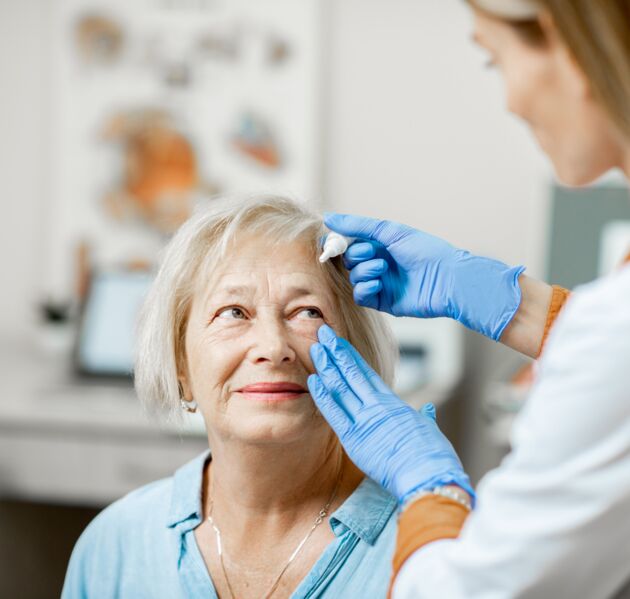Eye Health: Preventing Age-Related Macular Degeneration (AMD)

Among those over fifty, age-related macular degeneration (AMD) ranks among the main causes of vision loss. Affected the macula, the area of the eye in charge of central vision, essential for reading, driving, and face recognition, this disorder compromises Since there is no cure for AMD, treating it becomes difficult once it starts to advance. Preventing it is therefore crucial. Understanding its causes, symptoms, and preventative actions will help you to significantly lower your AMD risk and preserve your long-term eye health.
Understanding Age-Related Macular Degeneration
What Is AMD?
When the macula, in the center of the retina, ages, AMD results. Forming visual images, the light-sensitive layer at the rear of the eye called the retina alerts the brain. Processing fine detail and color, the macula is central and its degradation causes either blurred or limited central vision. While peripheral vision is still intact, loss of central vision can greatly affect everyday tasks.
Types of AMD
About 80–90% of cases of dry AMD, the more prevalent kind, advance gradually. It is typified by yellow deposits known as drusen accumulating under the retina causing macular thinning.Though less prevalent, wet AMD advances quickly and is more severe. It results from aberrant blood vessels growing under the retina causing fluid leakage that compromises the macula.
Causes and Risk Factors of AMD
Although the specific origins of AMD are unknown, some risk factors help to explain its emergence:
Age: The main risk factor; most vulnerable are those over 50.
Genetically, family history of AMD raises your risk of getting it.
Smoking raises a two- to three-fold risk relative to non-smoking.
Diet: AMD can be brought on by low antioxidant consumption and heavy quantities of harmful fats.
Retinal damage could result from extended UV exposure.
Conditions including high blood pressure and cardiovascular disease can restrict blood flow to the eyes, therefore compromising retinal health.
AMD Symptoms
Early recognition of AMD symptoms can aid with care and possibly decrease its development. Typical symptoms consist in:
Centre of the visual field blurred or distorted eyesight.
trouble adjusting to low light levels, say those of poorly lit rooms.
more printed word blurring.
Diminished color intensity.
trouble identifying people.
Early identification by routine eye tests is crucial, particularly in cases with any of these symptoms.
Preventing AMD: Lifestyle and Dietary Strategies
Although AMD cannot be totally avoided, your risk may be much lowered by a proactive attitude to lifestyle choices and eye health.
Eye Health and Nutrition
Diets heavy in antioxidants—especially vitamins C, E, beta-carotene, and zinc—help to maintain retinal health. Excellent sources of these vitamins are foods including almonds, carrots, oranges, and leafy greens.
Found in fish including salmon and sardines, omega-3 fatty acids help preserve cell integrity in the eyes and lower inflammation.
Found in leafy greens and yellow foods, lutein and zeaxanthin are carotenoids that concentrate in the macula and assist filter damaging blue light.
Quit Smoking
By lowering blood flow to the retina and raising oxidative stress, smoking quickens the course of AMD. Not only does quitting smoking lower your chance of AMD, but it also makes you generally healthier.
Guard Your Eyes Against UV Light
Retinal cells may be damaged by ultraviolet (UV) light. By helping to protect your eyes from UV light, UV-protected sunglasses help to reduce your risk of AMD. Search for sunglasses blocking 100% of UVB and UVA radiation.
Regular Exercise
Exercise improves cardiovascular health and lowers blood pressure, so preserving enough blood flow to the retina and hence promotes eye health. Plan at least thirty minutes of moderate exercise—walking or cycling—into your schedule.
Manage Chronic Conditions
Over time, conditions include diabetes, high cholesterol, and hypertension can compromise eye health. Appropriate lifestyle, nutrition, and medication use can help to avoid problems aggravating AMD.
Medical Approaches to Managing AMD
Many medicinal treatments are available to help slow down the advancement of AMD when lifestyle changes prove insufficient.
Anti-VEGF Injections
The most successful course of treatment for wet AMD is anti-VEGF (vascular endothelial growth factor) injections. By blocking aberrant blood vessel formation in the retina, these medications help to either slow down or stop vision loss.
Photodynamic Therapy
This treatment consists on infusing a light-sensitive medication into the bloodstream, which is then triggered by a laser aimed at the aberrant blood vessels in the retina. It can halt the advancement of wet AMD even if it does not restore sight.
Laser Therapy
Although this is less common because of possible harm to neighboring retinal tissue, laser surgery is occasionally performed to eliminate aberrant blood vessels.
AREDS and AREDS2 Supplements
High-dose antioxidant supplements including vitamins C, E, zinc, and copper can slow down AMD's progression, according the Age- Related Eye Disease Study (AREDS). Later AREDS2 incorporated lutein and zeaxanthin, which enhance eye health even more.
Advancements in AMD Treatment
With developments in gene therapy, stem cell treatments, and retinal implants, AMD treatment seems bright going forward. Researchers are looking at gene therapies to fix or replace faulty genes causing AMD, therefore maybe stopping or reversing the condition. Stem cells provide a regenerative method of treating AMD since they could repair damaged cells in the retina. Retinal implants directly stimulate the retina and bypass damaged cells, therefore providing hope for vision restoration.
Taking Control of Your Vision
Although age-related macular degeneration is somewhat frequent, you can greatly stop or slow down its development by knowing its risk factors and choosing a proactive lifestyle. Early detection depends on regular eye exams, particularly beyond the age of 50; also, a diet high in nutrients supports eye health. For individuals at more risk, stopping smoking, using UV-protective eyewear, and controlling general health are great ways to save vision. Although AMD presents difficulties, early intervention is still your greatest protection; improvements in treatment give optimism. Give your eye health first priority by choosing wisely to help maintain your vision for many years to come.


